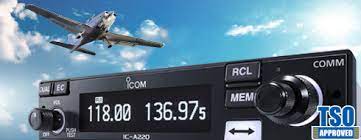Learn to takeoff, carry out an approach and land while following published procedures.
Archives: Theory Courses
Glide approach Briefing
Learn to complete a landing without power from late downwind.
* * * Glide approach * * *
Slow flight Briefing
Learn to maintain straight and level and turn at low airspeed in various configurations.
* * * Slow flight * * *
Medium turns Briefing
Learn to change direction at 30 degrees of bank, maintaining altitude and balance.
* * * Medium turns * * *
Climbing and descending Briefing
Learn to enter a climb/descent from straight and level, maintain the climb/descent and level off at a pre-selected altitude.
* * * Climbing and descending * * *
Effects of Controls Briefing
Learn the effects of primary and ancillary controls on the aircraft.
* * * effects of controls * * *
S/L Sequenece
Straight and Level Briefing
Learn to control your lift and maintain straight and level flight at a constant airspeed, altitude, direction and in balance.
* * * Straight and level * * *
Quiz for 2.10.2
Transmitting and Receiving Quiz
* * * Practices & Rules * * *
2.10
Practices & Rules

Intro / Why 2.10
Syllabus 2.10
Intro / Why 2.10
Mastering Rules and Practices in Radiotelephony:
Welcome to the section on Rules and Practices in Radiotelephony, a cornerstone of effective communication in aviation. Here’s why this knowledge is pivotal for pilots:
Proficient Communication Skills: Demonstrate proficiency in transmitting and receiving spoken messages with precision. This includes adherence to prescribed procedures, language usage, spelling, numeral transmission, and familiarity with procedure words and phrases. Clear communication is vital for safe and efficient operations.
Regulatory Compliance: Showcase a good working knowledge of specific Civil Aviation Rules, including those related to communication (e.g., rule 91.217, 91.243, 91.247). Compliance ensures that you are well-versed in the regulations governing communication practices.
AIPNZ Understanding: Dive into AIPNZ Volume 1 to understand radio procedures, requirements, and functions associated with UNICOM, ATIS, AFRU, and AWIB. This knowledge is essential for interacting seamlessly within the aviation communication network.
VFR Phraseology: Demonstrate a good working knowledge of phraseology used for and by VFR (Visual Flight Rules) aircraft. This understanding enhances communication clarity between pilots and air traffic control.
Search and Rescue Communication: Explore the AIPNZ and AC172-1 to comprehend communication services and aspects related to Search and Rescue. This knowledge equips you to effectively communicate during critical situations.
Remember, mastering radiotelephony rules and practices is not just a regulatory requirement; it’s a skill that enhances the safety and efficiency of your flights. Clear skies!
Syllabus 2.10
2.10 Rules and Practices
2.10.2 Demonstrate proficiency in transmitting and receiving spoken messages competently and in accordance with prescribed procedures, including
(a) language to be used;
(b) word spelling;
(c) transmission of numerals;
(d) procedure words and phrases;
(e) time system;
(f) establishment of communications;
(g) frequencies to be used;
(h) identification of service;
(i) radiotelephony aircraft callsigns;
(j) procedures for exchange of messages;
(k) corrections and repetition tests;
(l) listening out;
(m) readability scale.
2.10.4 Demonstrate a good working knowledge of the following Civil Aviation Rules:
(a) rule 91.217 (5);
(b) rule 91.243;
(c) rule 91.245 (b), (c) and (d);
(d) rule 91.247;
(e) rule 91.249 (a) and (b);
(f) rule 91.513;
(g) rule 91.515;
(h) rule 91.529.
2.10.6 AIPNZ Volume 1, describe the radio procedures, requirements, and functions associated with:
(a) UNICOM;
(b) ATIS;
(c) AFRU;
(d) AWIB.
2.10.8 AIPNZ demonstrate a good working knowledge of the phraseology used for, and by, VFR aircraft.
2.10.10 Demonstrate a good working knowledge of the AIPNZ and AC172-1 with regard to:
(a) communication services;
(b) communication aspects in the Search and Rescue section.